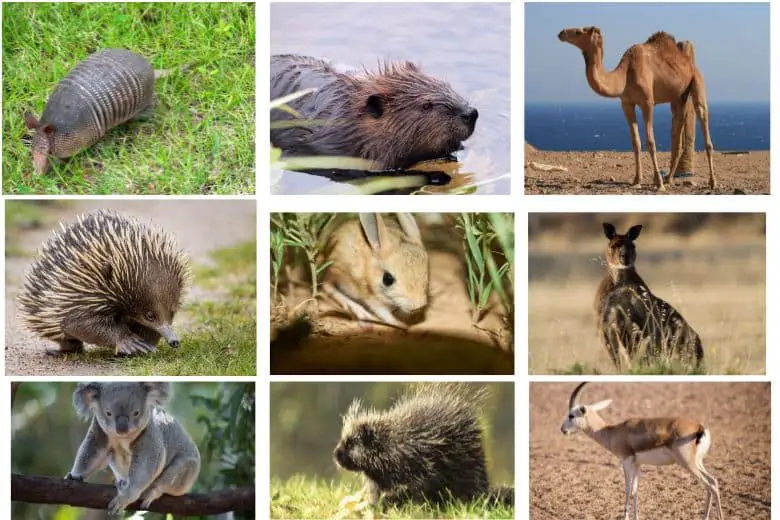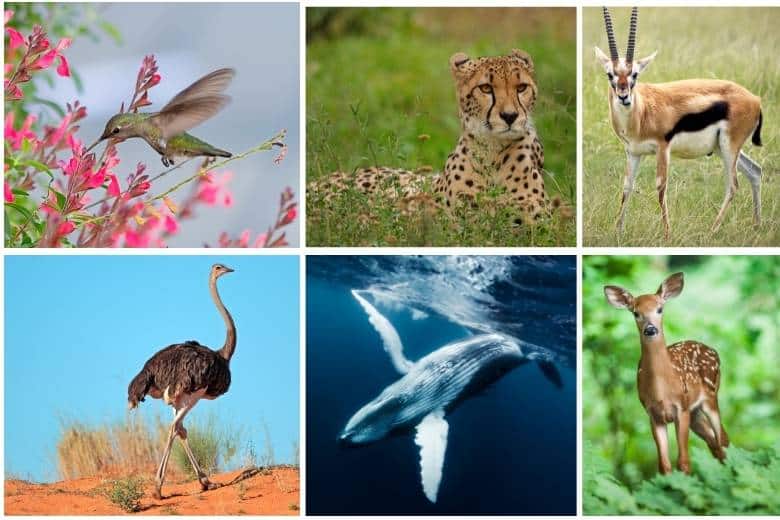There are many animals that cannot walk backwards. These animals include but are not limited to sloths, elephants, and some lizards. Some of these animals have a physical disability that prevents them from moving their limbs in a backwards motion, while others have simply never learned how to walk backwards.
In this article, We will be discussing the different animals that cannot walk backwards and the reasons why they cannot do so. We will also be exploring how this limitation affects these animals in their everyday lives.
6 Animals that cannot walk backwards
- Sloths
- Elephants
- Some lizards
- Penguins
- Flamingos
- ostriches
Sloths:
Sloths are arboreal mammals found in the rainforests of Central and South America. Most species of sloth are about the size of a small dog and have a lifespan of 20-30 years. Sloths are known for their slow movements and their unique ability to hang upside down from tree branches.
Sloths are able to move their limbs in a forwards motion, but they are unable to walk backwards. This is due to the anatomy of their feet, which are only able to grip tree branches in one direction. Additionally, sloths have a very low muscle mass, which makes it difficult for them to move quickly in any direction.
While the inability to walk backwards may seem like a minor limitation, it can actually have a significant impact on a sloth’s life. For example, if a sloth falls out of a tree, it will be unable to get back up and will likely die. Additionally, sloths are often preyed upon by predators such as jaguars and eagles. If a sloth is being chased by a predator, it will not be able to escape by walking backwards into a tree.
Elephants:
Elephants are the largest land animals on Earth, weigh between two and six tonnes, and can live for up to 70 years. They are found in Africa and Asia and are known for their big ears, trunks, and tusks.
Elephants are able to move their limbs in a forward motion, but they are unable to walk backwards. This is due to the anatomy of their feet, which are only able to grip the ground in one direction. Additionally, elephants have a very large body mass, which makes it difficult for them to move quickly in any direction.
While the inability to walk backwards may seem like a minor limitation, it can actually have a significant impact on an elephant’s life. For example, if an elephant gets stuck in a hole, it will not be able to get out by walking backwards. Additionally, elephants are often preyed upon by predators such as lions and crocodiles. If an elephant is being chased by a predator, it will not be able to escape by walking backwards.
Lizards:
Lizards are a type of reptile that can be found all over the world. They come in a variety of shapes and sizes and can live for up to 20 years.
Some lizards, such as the chameleon, are able to move their limbs in a forward motion, but they are unable to walk backwards. This is due to the anatomy of their feet, which are only able to grip the ground in one direction. Additionally, some lizards have a very low muscle mass, which makes it difficult for them to move quickly in any direction.
While the inability to walk backwards may seem like a minor limitation, it can actually have a significant impact on a lizard’s life. For example, if a lizard falls off a branch, it will not be able to get back up by walking backwards. Additionally, lizards are often preyed upon by predators such as snakes and birds. If a lizard is being chased by a predator, it will not be able to escape by walking backwards.
Penguins:
Penguins are a type of bird that is native to the Southern Hemisphere. They are known for their black and white feathers, and their ability to swim. Penguins can live for up to 20 years.
Penguins are able to move their limbs in a forward motion, but they are unable to walk backwards. This is due to the anatomy of their feet, which are only able to grip the ground in one direction. Additionally, penguins have a very low muscle mass, which makes it difficult for them to move quickly in any direction.
While the inability to walk backwards may seem like a minor limitation, it can actually have a significant impact on a penguin’s life. For example, if a penguin falls into a crevice, it will not be able to get out by walking backwards. Additionally, penguins are often preyed upon by predators such as leopard seals and orcas. If a penguin is being chased by a predator, it will not be able to escape by walking backwards.
Flamingos:
Flamingos are a type of bird that is native to Africa, Asia, and the Americas. They are known for their pink feathers, long necks, and legs. Flamingos can live for up to 30 years.
Flamingos are able to move their limbs in a forward motion, but they are unable to walk backwards. This is due to the anatomy of their feet, which are only able to grip the ground in one direction. Additionally, flamingos have a very low muscle mass, which makes it difficult for them to move quickly in any direction.
While the inability to walk backwards may seem like a minor limitation, it can actually have a significant impact on a flamingo’s life. For example, if a flamingo falls into a body of water, it will not be able to get out by walking backwards. Additionally, flamingos are often preyed upon by predators such as crocodiles and lions. If a flamingo is being chased by a predator, it will not be able to escape by walking backwards.
Ostriches:
Ostriches are a type of bird that is native to Africa. They are the largest bird in the world, weigh up to 150 pounds, and can live for up to 40 years. Ostriches are known for their long necks and legs.
Ostriches are able to move their limbs in a forward motion, but they are unable to walk backwards. This is due to the anatomy of their feet, which are only able to grip the ground in one direction. Additionally, ostriches have a very low muscle mass, which makes it difficult for them to move quickly in any direction.
While the inability to walk backwards may seem like a minor limitation, it can actually have a significant impact on an ostrich’s life. For example, if an ostrich falls into a hole, it will not be able to get out by walking backwards. Additionally, ostriches are often preyed upon by predators such as lions and cheetahs. If an ostrich is being chased by a predator, it will not be able to escape by walking backwards.
As you can see, there are many animals that cannot walk backwards. This limitation can have a significant impact on these animals’ lives, as it can prevent them from escaping predators and getting out of dangerous situations.
Frequently Asked Questions
- What is the difference between an animal that can walk backwards and one that cannot?
The difference between an animal that can walk backwards and one that cannot is that the former has a physical disability that prevents them from moving its limbs in a backwards motion, while the latter has never learned how to walk backwards.
- Which animals cannot walk backwards?
There are many animals that cannot walk backwards, including but not limited to: sloths, elephants, and some lizards.
- Why can’t these animals walk backwards?
The reasons why these animals cannot walk backwards vary. Some of these animals have a physical disability that prevents them from moving their limbs in a backwards motion, while others have simply never learned how to walk backwards.
- How does this limitation affect these animals in their everyday lives?
The inability to walk backwards can have a significant impact on these animals’ lives, as it can prevent them from escaping predators and getting out of dangerous situations.
- Are there any benefits to being unable to walk backwards?
There are no known benefits to being unable to walk backwards.
Conclusion
As you can see, there are many animals that cannot walk backwards. This limitation can have a significant impact on these animals’ lives, as it can prevent them from escaping predators and getting out of dangerous situations. While there are no known benefits to being unable to walk backwards, these animals have still managed to adapt and thrive in their environments.


